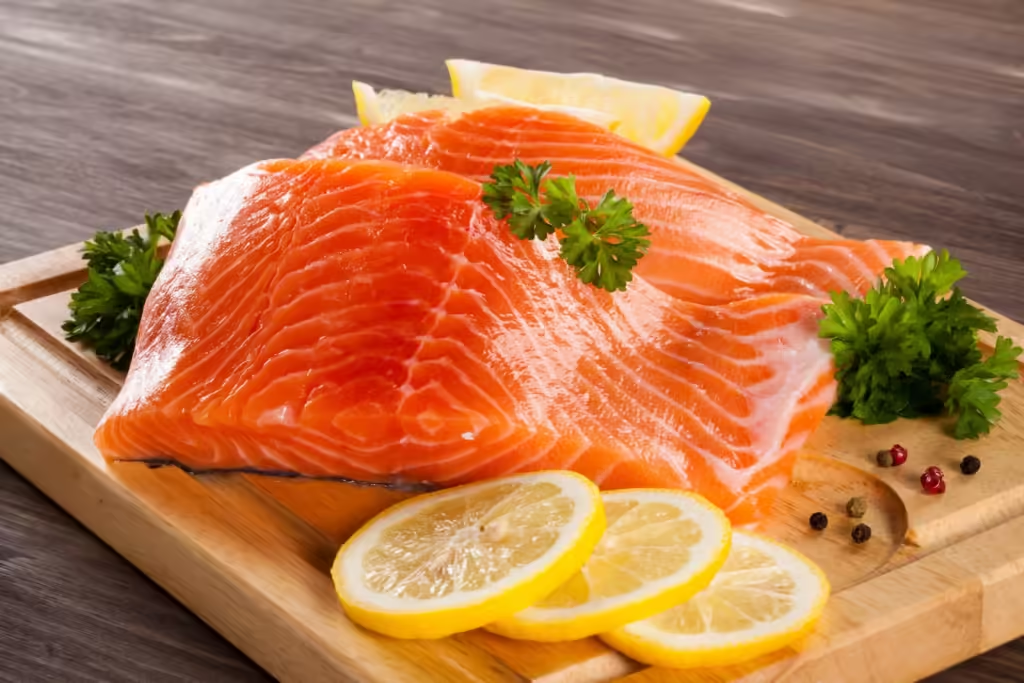Fish have been integral to human life for centuries, serving both as a vital food source and as captivating companions in our homes. This article delves into the dual roles of fish, exploring their nutritional benefits and the joys of keeping them as pets.
🍽️ Fish as a Nutrient-Rich Food Source
🧬 Nutritional Benefits of Consuming Fish
Fish are renowned for their high-quality protein and essential nutrients. Regular consumption offers numerous health advantages:
- Heart Health: Rich in omega-3 fatty acids, fish can reduce the risk of heart disease and stroke.
- Brain Development: DHA, a type of omega-3, is crucial for brain and eye development, especially in infants and children.
- Vitamin D Source: Fish like salmon and mackerel are among the few natural dietary sources of vitamin D.
- Essential Minerals: Provides iodine, selenium, and zinc, supporting thyroid function and immune health.
🐠 Types of Fish and Their Nutritional Profiles
| Fish Type | Omega-3 Content | Protein (per 100g) | Notable Nutrients |
|---|---|---|---|
| Salmon | High | 20g | Vitamin D, B12, Selenium |
| Mackerel | High | 19g | Vitamin B6, Niacin |
| Tilapia | Moderate | 26g | Phosphorus, Potassium |
| Cod | Low | 18g | Vitamin B12, Iodine |
Note: Nutrient values are approximate and can vary based on preparation methods.
🐠 Fish as Delightful Pets

🏡 Benefits of Keeping Fish as Pets
- Stress Reduction: Watching fish swim can have calming effects, reducing anxiety and stress levels.
- Educational Value: Aquariums offer learning opportunities about ecosystems, biology, and responsibility.
- Space Efficiency: Ideal for small living spaces where traditional pets might not be feasible.
- Allergy-Friendly: Fish are a great option for those allergic to fur or dander.
🛠️ Essential Considerations for Fish Care
Proper care ensures a healthy environment for pet fish:
- Tank Size: Ensure adequate space; overcrowding can lead to stress and disease.
- Water Quality: Regularly monitor pH, ammonia, nitrite, and nitrate levels.
- Filtration and Aeration: Maintain clean water and adequate oxygen levels.
- Temperature Control: Use heaters or chillers to maintain species-specific temperatures.
- Diet: Provide a balanced diet suitable for the specific fish species.
🔍 Comparing Fish as Food and Pet
| Aspect | Fish as Food | Fish as Pet |
|---|---|---|
| Purpose | Nutrition and culinary enjoyment | Companionship and aesthetic appeal |
| Interaction | Consumption | Observation and care |
| Maintenance | Cooking and storage | Regular tank cleaning and monitoring |
| Lifespan | Short-term (consumed) | Varies by species; some live for several years |
| Cost | Varies based on type and preparation | Initial setup and ongoing maintenance expenses |

📸 Visual Enhancements
To enrich the article, consider including the following images:
- Grilled Salmon Dish: Showcasing fish as a delicious meal.
- Home Aquarium Setup: Displaying a well-maintained fish tank.
- Nutritional Chart: Visual representation of fish nutrients.
- Different Fish Species: Highlighting variety in both food and pet contexts.
Ensure images are high-quality and appropriately licensed for use.
📝 Conclusion
Fish play multifaceted roles in our lives, offering both nutritional benefits and companionship. Whether you’re savoring a grilled fillet or admiring the serene movements of aquarium dwellers, fish enrich our experiences in diverse ways. Embracing both aspects can lead to a healthier diet and a more tranquil living environment.
